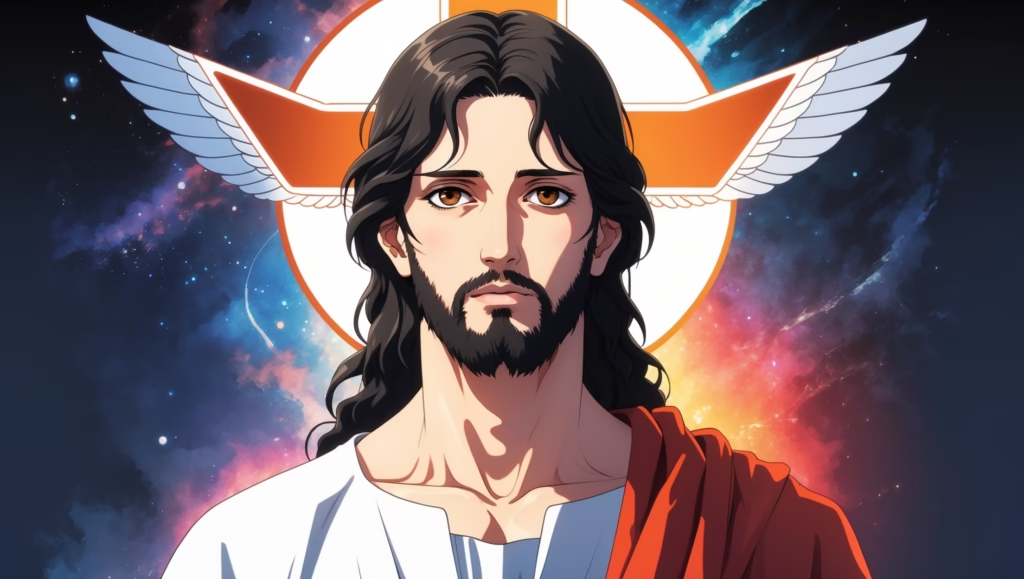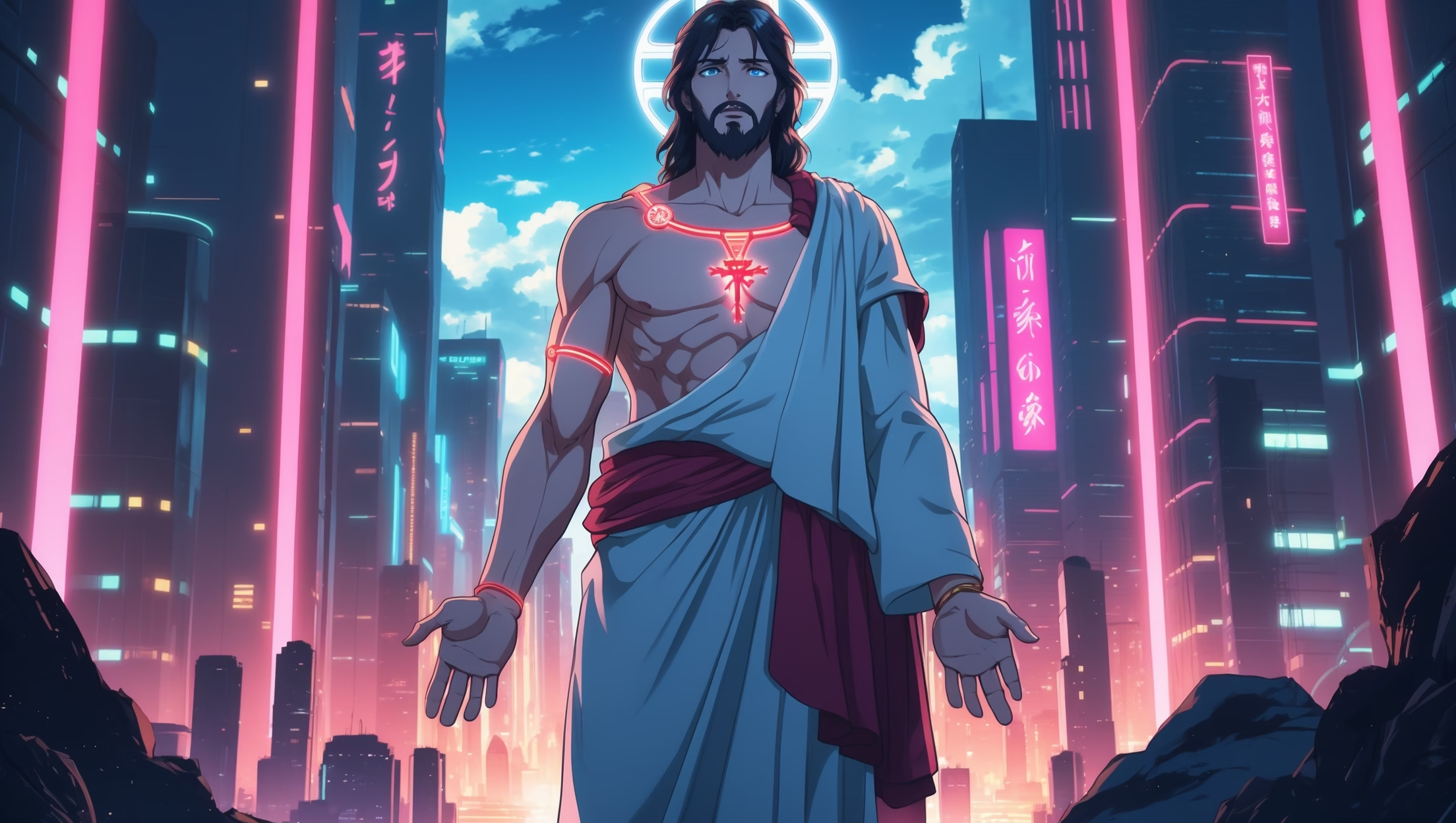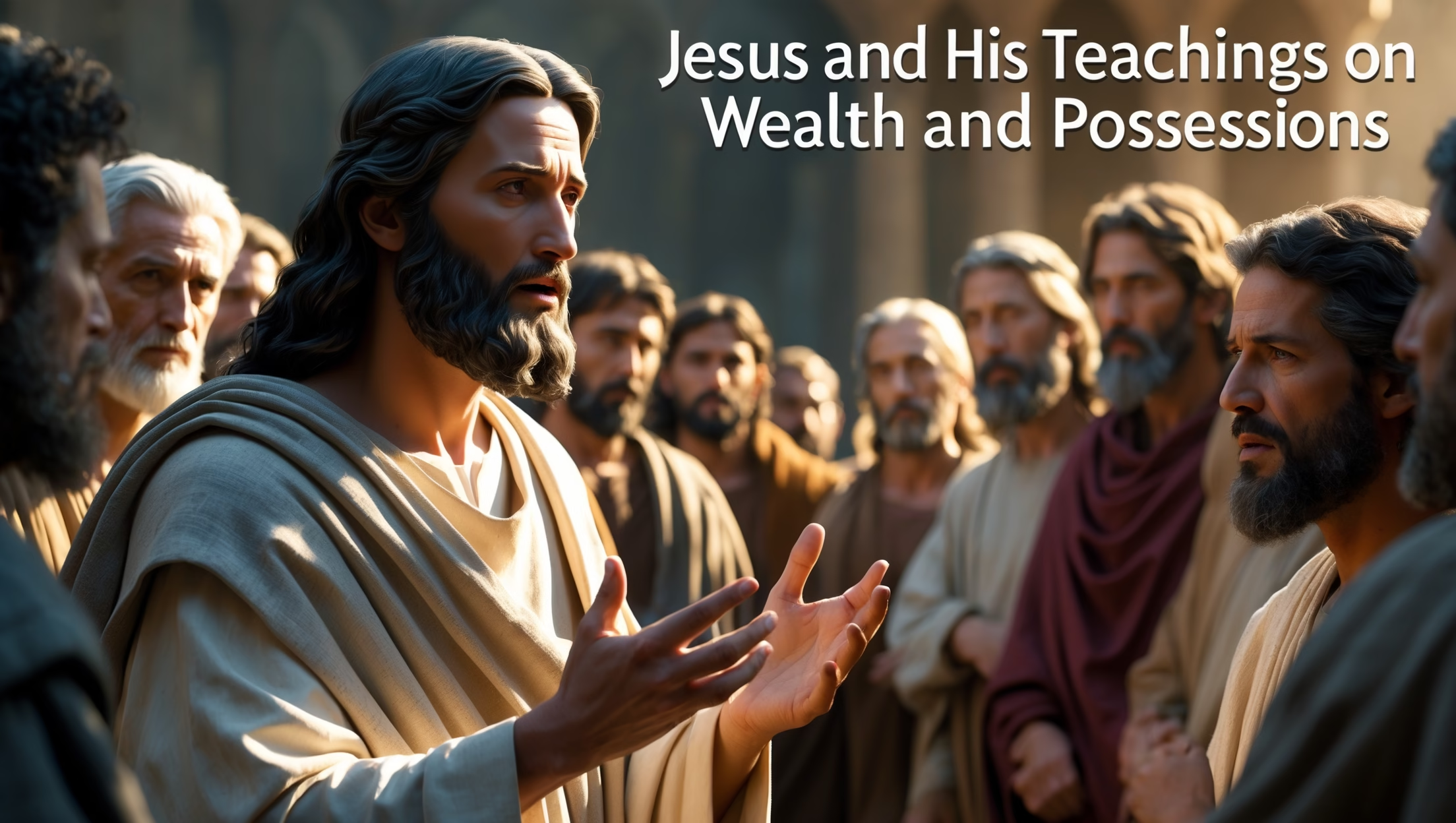While Christianity has historically been a minority religion in Japan, the figure of Jesus Christ has nonetheless inspired remarkable reinterpretations in anime and manga. Far from literal depictions of biblical narratives, Japanese creators often present Christ symbolically, exploring themes of suffering, redemption, moral responsibility, and human struggle in highly imaginative ways. These portrayals show that the story of Jesus transcends religious boundaries, shaping narratives across mediums, genres, and cultures.
Japanese anime, with its capacity for both fantastical and deeply philosophical storytelling, provides a fertile ground for reimagining Christ. Whether through giant robots, stigmata-bearing pacifists, or comedic portrayals, these interpretations demonstrate that the core themes of Jesus’ life—sacrifice, love, justice, and hope—remain profoundly relevant even in contexts far removed from first-century Palestine.

Notable Christ Figures in Anime
Evangelion Unit-01 – Neon Genesis Evangelion
Neon Genesis Evangelion (1995–1996), one of Japan’s most iconic anime series, presents an ambiguous, heavily symbolic engagement with Christian imagery. In End of Evangelion (1997), Evangelion Unit-01 undergoes a crucifixion-like scene, suspended in a moment of suffering and apocalyptic tension.
The symbolism here is multilayered:
- Human suffering and existential anxiety: The characters confront profound moral, psychological, and spiritual dilemmas, echoing Christ’s anguish in Gethsemane.
- Redemption and sacrifice: Just as Christ’s death is both human and cosmic in significance, Unit-01’s crucifixion symbolizes humanity’s reliance on sacrificial instruments to achieve renewal.
- Apocalyptic resonance: The scene mirrors the tension between destruction and salvation, a core theme in Christian eschatology.
Though Evangelion’s creators are not necessarily promoting Christianity, their use of cruciform imagery taps into universal archetypes of suffering, salvation, and the human longing for transcendence.
Vash the Stampede – Trigun
In Trigun (1998), the protagonist Vash the Stampede bears stigmata-like markings, recalling Christ’s wounds. Vash is a pacifist navigating a violent, chaotic world, and his ethical stance embodies Christlike principles: forgiveness, compassion, and nonviolence.
Key aspects of this Christ figure include:
- Moral witness in adversity: Vash faces enemies and societal chaos, yet consistently chooses mercy over retaliation.
- Ethical rather than historical emphasis: Unlike Evangelion’s symbolic crucifixion, Vash mirrors Jesus’ teachings, demonstrating the practical application of love and sacrifice in human society.
- Redemptive influence on others: Vash’s compassion transforms those around him, echoing the transformative power of Christ’s ministry.
This representation highlights how Japanese storytellers prioritize ethical resonance over strict theological fidelity, creating Christlike characters that challenge audiences to reflect on human behavior, justice, and mercy.
Saint Young Men
Saint Young Men (2006–present) takes a markedly different approach. This comedic manga portrays Jesus and Buddha as roommates living in modern Tokyo, navigating mundane life while occasionally engaging in divine antics.
Though humorous, the series offers significant insights:
- Cross-cultural dialogue: Jesus interacts with Japanese society in everyday scenarios, highlighting universality in moral and spiritual lessons.
- Playful engagement with divinity: The series explores how sacred figures might live alongside ordinary humans, emphasizing approachability and relational aspects of faith.
- Cultural blending: By pairing Jesus with Buddha, the narrative fosters reflection on interfaith understanding and the shared ethical themes across religions.
Even in comedy, Jesus’ portrayal conveys essential truths: presence, moral example, and enduring relevance.
Cultural Insights
The inclusion of Christ in Japanese anime illuminates broader cultural and theological dynamics:
- Syncretism: Post-war Japan blends Shinto, Buddhist, and Christian motifs to address moral, existential, and spiritual concerns. Christlike figures are often juxtaposed with indigenous philosophies, creating narratives that explore suffering, identity, and ethical responsibility.
- Sacrifice and existential angst: Anime often emphasizes human frailty and moral tension, with Christlike imagery symbolizing ethical courage and spiritual endurance. These depictions resonate with universal human experiences—pain, hope, redemption, and moral choice.
- Global relevance: Japanese anime translates Christian themes for modern, secular, and international audiences, showing how Jesus’ story can be understood metaphorically, ethically, and culturally, rather than strictly doctrinally.
Why This Matters Today
- Ethical reflection: Even in fantastical or secularized contexts, Jesus’ message—compassion, forgiveness, moral courage—persists, encouraging audiences to consider the moral weight of their actions.
- Cross-cultural dialogue: Anime adaptations of Jesus open avenues for interfaith and intercultural conversations, showing how universal themes can transcend geographic and religious boundaries.
- Cultural literacy: Recognizing Christlike imagery in media equips scholars, educators, and viewers to appreciate the ways sacred narratives inspire creativity and moral reflection globally.
- Psychological resonance: These portrayals provide symbolic frameworks for coping with human suffering, existential uncertainty, and ethical dilemmas, much like allegorical or parabolic stories in Scripture.
Conclusion
Whether through Paul’s cosmic hymn in Colossians 1 or through the imaginative landscapes of Japanese anime, Jesus continues to shape human thought, ethics, and culture. In Colossians, He sustains the universe, reconciles creation, and directs the church; in Japanese animation, He challenges audiences to reflect on suffering, morality, compassion, and redemption.
These diverse portrayals underscore a striking truth: Jesus’ life and teachings are not confined to a historical or geographical context. They remain flexible, universally resonant, and creatively inspiring, capable of speaking into the imagination of every generation. From mecha to manga, from cosmic hymns to playful sitcoms, the figure of Jesus continues to engage humanity in ways both profound and unexpected.









